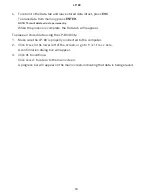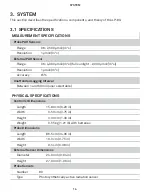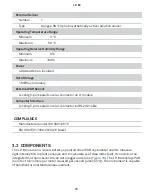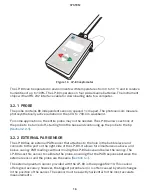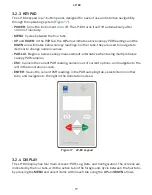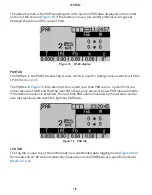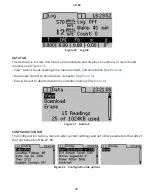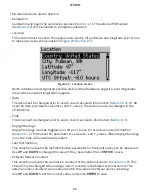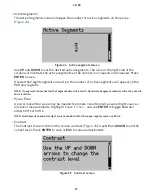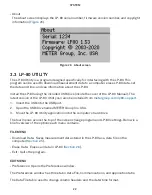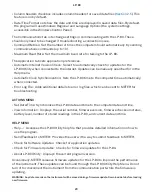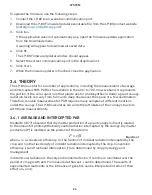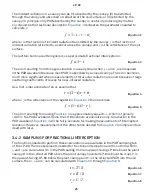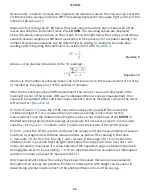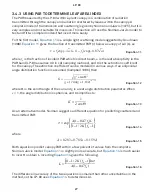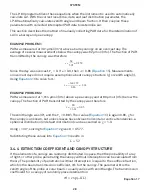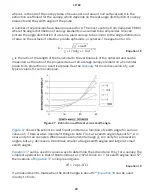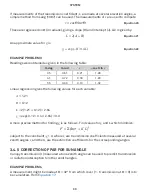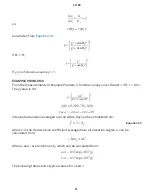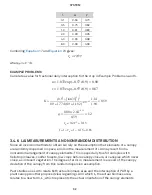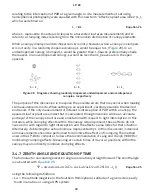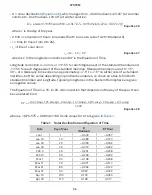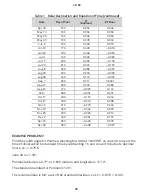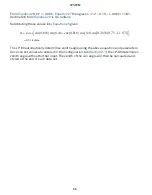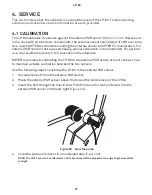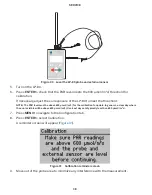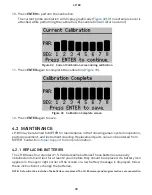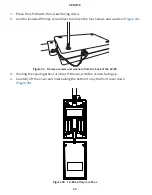
25
LP-80
The incident radiation on a canopy can be (1) absorbed by the canopy, (2) transmitted
through the canopy and absorbed or reflected at the soil surface, or (3) reflected by the
canopy. In principle, only PAR absorbed by the canopy is useful in producing dry matter,
so
f
should be the fractional absorption.
delineates the parameters needed to
calculate
f
:
Equation 2
= − − −
f
t r tr
1
s
where
t
is the fraction of incident radiation transmitted by the canopy,
r
is the fraction of
incident radiation reflected to a sensor above the canopy, and
r
s
is the reflectance of the soil
surface.
The last two terms are often ignored, so approximate fractional interception is
Equation 3
f
≅
1
−
t
The error resulting from this approximation is usually small when
t
,
r
, and
r
s
are measured
in the PAR waveband because most PAR is absorbed by a closed canopy. The error becomes
much more significant when measurements of total solar radiation are used because of large
scattering coefficients of leaves for near-infrared radiation.
As a first-order estimate of error, assume that
Equation 4
r
=
(1
−
t
)
r
c
+
tr
s
where
r
c
is the reflectance of the vegetation.
Equation 5
f
=
(1
−
t
)(1
−
r
c
)
The error resulting from using
is approximately equal to
r
c
, which is typically
<0.05 in the PAR waveband. Since the LP-80 sensors are sensitive only to radiation in the
PAR waveband,
will be fairly accurate for making measurements of intercepted
radiation. However, measurement of the other terms needed for
is simple and are
dealt with later.
3.4.2 SAMPLING FOR FRACTIONAL INTERCEPTION
The functions needed to perform these calculations are available in the PAR sampling tab
of the LP-80. The measurements needed for fractional interception are those from which
t
,
r
, and
r
s
are calculated. If
S
is the PAR reading from an upward-facing LP-80 above the plant
canopy,
R
is the reflected PAR above the plant canopy (inverted LP-80 above the crop),
T
is
the upward-facing LP-80 below the plant canopy, and
U
is the reflected PAR from the soil
surface, then
t
,
r
, and
r
s
can be calculated with
through
.
Equation 6
t
=
T
/
S
Equation 7
r
=
R
/
S
Equation 8
r
s
=
U
/
T



